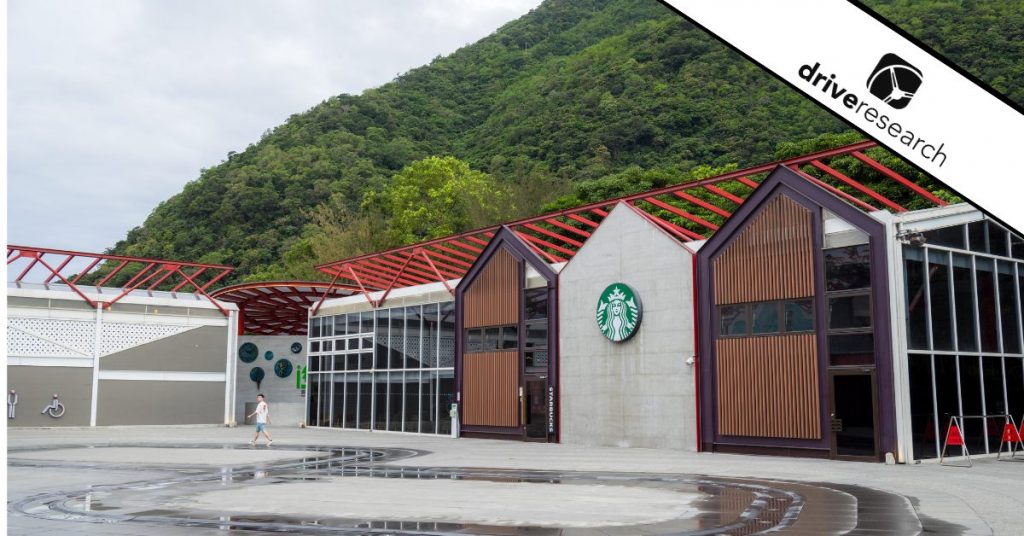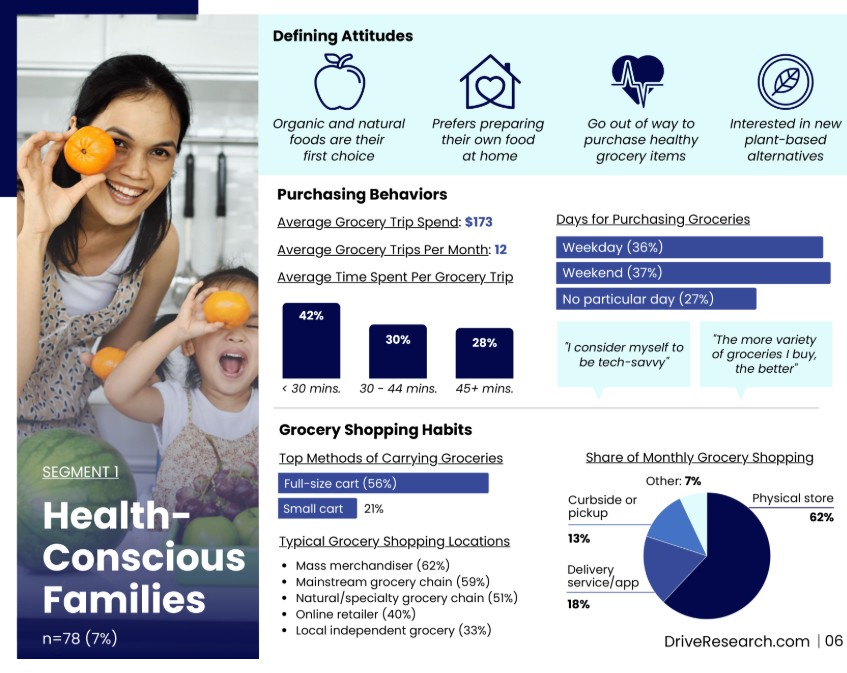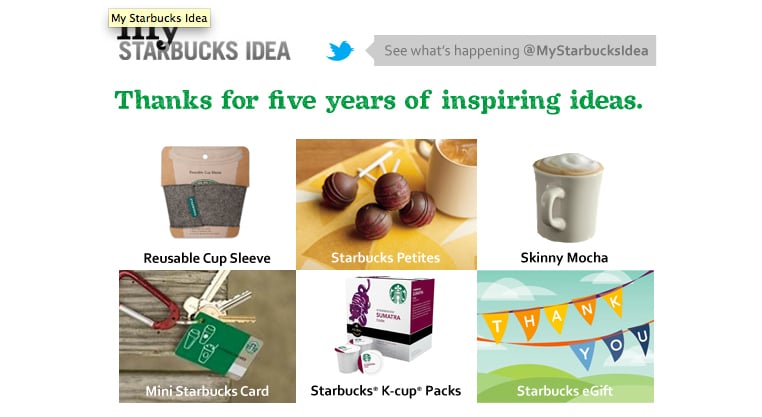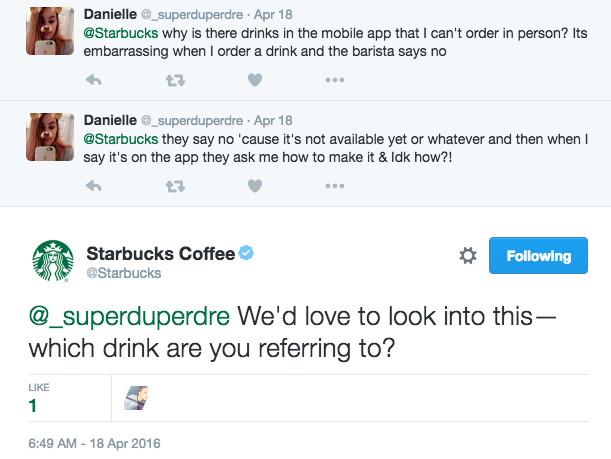
There’s no doubt that coffee is a staple in the lives of many consumers.
But, despite the many options at home and in-store, our research shows that 39% of Americans enjoy Starbucks coffee over any other brand.
That’s because Starbucks is another famous brand that depends on market research to understand its customers’ needs, wants, and preferences.
As a result of Starbucks’ market research strategy, they have grown the brand to have nearly 16,000 locations across the United States.
Keep on reading to learn the market research methods that Starbucks uses and how they’ve won the hearts of coffee lovers everywhere.
Method #1: Customer Segmentation
The first methodology heavily involved in Starbucks’ market research strategy is segmentation.
Grouping your customers into market segments lets you discover key insights about the specific groups within a brand’s audience.
In fact, segmentation is one of the best tools for market research because it provides unique data on demographics that can be used to create audience-specific marketing strategies.
For instance, Starbucks utilized a psychotropic segment to gain insights into customers’ personal tastes, values, and lifestyle choices.
With this market research, Starbucks found a segment that prioritizes:
- Sustainability
- Health consciousness
- Plant-based lifestyle
- Allergies
As a result, Starbucks was then able to cater to that group through organizational values for sustainability and multiple options for non-dairy milk at each location.
Going one step further, they evaluated customer feedback to learn what locations required more non-dairy options than others.
This insight helped Starbucks to determine where they needed to purchase more non-dairy inventory and where they could purchase less.
Drive Research often conducts customer segmentation for our clients. Download an example customer segmentation report of U.S. grocery shoppers to learn what types of insights it can uncover.

Method 2: The My Starbucks Idea Platform
In 2008, Starbucks rolled out its “Transformation Agenda.” This used new market research methods to gain feedback from potential customers, existing customers, and employees.
This classic Starbucks market research strategy is a fantastic example of how consumer feedback is used to drive decision-making – rather than making assumptions about what customers want.
On The My Starbucks Idea blog, customers submitted ideas for new menu items or requests for retired products to be brought back on the platform.
Every post was public and ranked on a leaderboard, creating a community for users to comment and share ideas.
In the first five years, the My Starbucks Idea platform amassed over 150,000 responses and engaged customers across the country.
Customers had opinions that they wanted to share, and Starbucks showed them they valued those opinions.

Image Source: TechXB
How the PSL Born
The pumpkin spice latte, one of Starbucks’ most popular seasonal items, was recommended and rolled out based on countless recommendations on My Starbucks Idea.
Each Fall, the pumpkin spice latte returns and has earned recognition as a cultural zeitgeist.
By implementing this unique market research strategy, Starbucks knew that its menu item would perform well. In turn, this showed customers their opinions mattered.
Method #3: In-Store Product Testing
Rolling out new products is necessary to keep Starbucks top-of-mind for their audiences, but factors like cost and time often loom over its decisions.
To decide which products will be the most beneficial to the brand, part of Starbucks’ market research strategy is to regularly utilize product testing.
Product testing is the process of determining how products will perform among a target audience. This market research strategy is conducted with in-home usage tests for their at-home coffee pods as well as in-store product tests.
For instance, Starbucks strategically designates “secret” locations across the United States to organically measure the appeal of new product concepts.
In December 2022, Starbucks locations in Delaware, Maryland, and Virginia offered customers 18 new products.
The conceptual new breakfast and lunch items included:
- Mocha Coconut Boba Bites
- Plant-Based Sous-Vide “Egg” Bites in partnership with JUST egg
- Plant-Based Chicken Sausage and Pepper Sous-Vide Bite
- Plant-Based Smoky Poblano & Black Bean Sous-Vide Bite
- Plant-Based Chicken Sausage & Pepper Sandwich Mini
- 5-Cheese Pasta Bake

Image source: Vegcomonist
Unlike in-home tests, this type of market research allows Starbucks to observe the product in real situations and find potential product design flaws, and cost savings to improve products before launching them globally (or choosing not to invest in the new menu item).
Our market research company, Drive Research finds that in-store product tests are a cost-effective alternative to conducting a focus group.
This is a useful type of market research to consider for testing new items and consumer demands, along with the likelihood of purchase before the official launch.
Method #4: Social Media Monitoring
While it may seem impossible to read every social media post or comment about a brand, Starbucks has consistently utilized social media monitoring to understand consumer needs, concerns, and feedback.
Social media monitoring is the process of identifying what is being said about a brand or product across social channels.
This component of Starbucks’ market research strategy is an opportunity for online reputation management (ORM) to ensure customer satisfaction.
While monitoring, Starbucks analyzes the social media sentiment, or the mood that is portrayed through the engagement to make it actionable feedback.

Image Source: The Medium
Social media monitoring can flag situations with consumers including:
- Responding to or repairing negative customer service experiences that are shared on social media
- Identifying consumer needs and wants. For example, changes to menu items that could generate leads
- Following trends on the rise that may pertain to Starbucks products and offerings
- Analyze what competitors are doing, and what Starbucks could do to differentiate
No matter what market research strategies a company uses, it must incorporate some form of social media monitoring. It is a strong indicator of customer values and opinions on your products or services.
Simply searching keywords and reading comments and mentions are cost-effective ways to dig into social media monitoring.
However, tools like Hootsuite, Sprout Social, and Meltwater can supplement that search and include advanced insights for analysis.
Contact Our Market Research Company
Now that we’ve uncovered the secret to Starbucks’ massive success, it’s time to consider market research for your own business.
Drive Research is a full-service market research company. Our team will work with yours to deliver key predictive data that can boost your outreach strategy.
If you’d like to learn more about our market research services, get in touch with us today!



